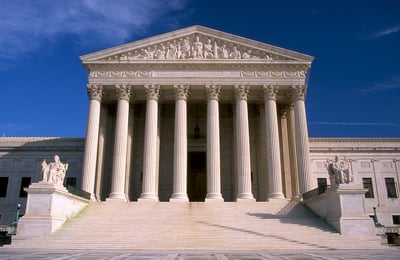
Affirmative action is one of the most hotly debated topics in college admissions today. With the recent filing of two lawsuits against elite colleges in the US, people are reconsidering how affirmative action affects college admissions—and whether colleges should change their affirmative action policies.
If you’re applying to college and wondering how the affirmative action debate will affect admissions, keep reading! In this article, we’ll answer the question, “What is affirmative action in college admissions?” and go over real examples of affirmative action in education today.
We’ll also explain how to plan ahead for changes to affirmative action in higher education, and how to put together stellar college applications no matter what happens.
So let’s get started.

Affirmative action is all about increasing diversity in the workplace and on college campuses. The idea is to bring people with different ethnic, racial, and gender backgrounds together by giving them equal access.
What Is Affirmative Action in Higher Education?
Affirmative action is a set of legal procedures that aim to eliminate and make amends for past, present, and future unlawful discrimination. In general, affirmative action laws and policies try to ensure that applicants will not be rejected based on race, ethnicity, religion, nationality, age, gender, or disability.
In college admissions, affirmative action policies work to eliminate race-based discrimination of college applicants and increase diversity in student populations.
Affirmative action policies are strictly regulated by state and federal governments. To prove they’re meeting regulations, employers and schools must document their affirmative action practices and metrics. If an employer or school’s affirmative action policy does not meet federal or state requirements, it can be declared unconstitutional.
Affirmative action’s goal is to give every applicant equal access to educational and workplace opportunities. Over the years, affirmative action laws and policies have undergone many changes. To help you understand why affirmative action was established and how it’s changed over the years, let’s look at the history of affirmative action.

Affirmative action dates back to John F. Kennedy. It’s been around a while!
History of Affirmative Action
It’s a common misconception that affirmative action laws were originally designed to address discrimination in college admissions. But that’s not the case! The first affirmative action laws only applied to employers and employment practices. In fact, they didn’t apply to college admissions at all.
Affirmative action was originally designed to create equal employment opportunities for all people in the US. It first appeared in 1961 when President John F. Kennedy issued Executive Order 10925. The order required employers who received federal funds to “take affirmative action to ensure that applicants are employed, and that employees are treated during employment, without regard to their race, creed, color, or national origin.” In other words, affirmative action began as a way to tackle discrimination in the workplace.
In 1965, President Lyndon B. Johnson’s Executive Order 11246 modified President Kennedy’s policy by prohibiting employment discrimination based on race, color, religion, national origin, and (added in 1967) gender. The modified law applied to all employment organizations that received federal contracts and subcontracts.
History of Affirmative Action in College Admissions
So what is affirmative action in college admissions, then?
While early affirmative action laws didn’t apply to college admissions, many colleges took cues from these laws to create their own affirmative action policies for college admissions. These policies worked to increase the racial diversity of college campuses and eliminate race-based discrimination in the admissions process.
In the 1960s and 1970s, many college admissions affirmative action policies relied on quotas to create a diverse student body. These quotas set aside a certain number of admission spots for students from a specific racial demographic. So for example, a university might set aside 10% of its admissions slots for Asian students, 5% of its slots for Black students, and so on.
But in 1978, quotas were outlawed by the US Supreme Court in Regents of the University of California v. Bakke. In this ruling, the court determined that using race as an exclusive basis for admissions decisions violates the 14th Amendment and the Civil Rights Act of 1964.
In response, colleges and universities adapted their affirmative action policies to make them more comprehensive, which is sometimes called a “holistic” approach. Race became one factor in affirmative actions policies, not the only factor. In other words, students would no longer be accepted or rejected based solely on their race.

People who continue to support affirmative action believe the policy opens doors for underrepresented students.
How Affirmative Action for Colleges Affects Admissions Today
Today, colleges can legally consider race as one of several factors in the admissions process. They can’t admit or reject students based solely on race, and they can’t use quotas or rating systems that consider race or minority status. The Supreme Court also requires schools to prove that there are no available race-neutral alternatives that could be used to evaluate college applicants instead of race.
Having said that, affirmative action isn’t required in college admissions. Universities can decide whether they want to use affirmative action policies or not. Schools that do use affirmative action can set their own policies as long as they don’t violate federal law.
Schools that use affirmative action today may consider race, gender, nationality, and/or family income in their admissions decisions. In general, the purpose of considering these factors is to increase diversity in their student population and to give students from many different backgrounds a chance at a college education.
This means that whether you’re affected by affirmative action—and how you’re affected by it— depends on each university’s individual policies.
We can look at affirmative action in college admissions statistics to see exactly how many schools use the policy to evaluate applications. According to 2015 data from the College Board and Ballotpedia, of 577 public four-year colleges, 109 consider race in admissions.
Also, as of 2022, nine states have banned affirmative action, which means schools in those states can’t consider race in college admissions. These states include California, Arizona, Florida, Idaho, Michigan, Nebraska, New Hampshire, Oklahoma, and Washington. If you apply to a school in these states, race and other demographic factors will not affect your admissions decision.

People don’t see eye to eye on affirmative action, and right now, they’re duking it out in the courts.
Why Are Affirmative Action Colleges Controversial?
In general, affirmative action is controversial because people perceive that the policy gives certain groups preferential treatment.
Those who oppose affirmative action claim that the policy makes college admissions more discriminatory. These people argue that granting advantages to one group, based on race or any other factor, impacts other groups negatively. People who hold this view would like affirmative action to be declared unconstitutional and for US universities to drop their affirmative action policies in college admissions.
Those who support affirmative action claim that the policy is important for ending race-based discrimination in college admissions. They also believe it helps make amends for past discrimination. These people argue that consideration of race (among other factors) diversifies college campuses and provides students with a well-rounded education. People who hold this view assert that equal opportunity for students from all backgrounds can’t be achieved without considering race and other demographic factors. Consequently, those supporting affirmative action hope that its constitutionality will be upheld by the Supreme Court.

The U.S. Supreme Court intends to hear two affirmative action cases in 2023. Their decision could change affirmative action forever.
Affirmative Action Cases in Higher Education
The Supreme Court has ruled on many affirmative action cases in higher education over the past decades. In 2022, the Supreme Court ruled on two new cases involving affirmative action: Students for Fair Admissions v. President and Fellows of Harvard, and Students for Fair Admissions v. University of North Carolina.
In both cases, the organization Students for Fair Admissions (SFFA) argues that affirmative action is discriminatory and wants to eliminate all race-conscious admissions practices. In order for this to happen, the Supreme Court would have to overturn a ruling from 2003 that upholds colleges’ right to consider race as one of several factors in a highly individualized admissions evaluation process.
In both cases, the plaintiffs claim that Harvard and the University of North Carolina discriminate against white and Asian students by giving preference to Black, Hispanic, and Native American students. More specifically, the case against Harvard claims that the university discriminates against Asian American students by using subjective metrics, like the likability or kindness of applicants. The plaintiffs in the Harvard case claim that this creates a ceiling for Asian American students in admissions.
The plaintiffs in both cases say that Harvard and UNC give preferential treatment to certain applicants based on race. Because racial preference has been declared unconstitutional in the past, the plaintiffs’ goal is for the Supreme Court to declare both schools’ affirmative action policies unconstitutional as well.
If the Supreme Court rules against Harvard and UNC, experts claim that the representation of Black and Latino students will decrease at schools all over the nation, and particularly elite schools. In Michigan, black undergraduate enrollment dropped to four percent in 2021 from seven percent in 2006, the year the state approved a referendum banning affirmative action.
The rulings on the Harvard and UNC cases are likely to be released during summer 2023. In the meantime, these examples of affirmative action in education remind us that admissions policies are always subject to change–even policies that have existed for decades.

Here’s how you can plan ahead in anticipation of changes to affirmative action policies.
3 Tips To Plan Ahead for Changes to College Affirmative Action
While we can’t know for certain, there’s always the possibility that there will be more changes to affirmative action in higher education. With the future of this admissions policy up in the air, it’s important to plan ahead so you’re prepared when college applications are due.
We’ve put together three tips that will help you plan ahead for college applications–and be prepared no matter what happens with affirmative action.
Tip 1: Do Your Research
You can stay on top of what’s happening with affirmative action nationally and at individual colleges by doing some research.
When it’s time to finalize your list of colleges and complete college applications, start with a quick Google search. Check for any new or recent news articles on affirmative action in the US, especially ones covering the recent Supreme Court cases we talked about earlier.
As you research, remember: stick to news unbiased outlets and articles. Read multiple sources and compare what you find so that you have an accurate picture of what’s going on with affirmative action and how it’s impacting college admissions.
Tip 2: Check College Admissions Websites
It’s also important to review the admissions policies for each school you’re applying to.
Schools that consider race in admissions will provide a statement about affirmative action on their website. This will help you learn exactly how your application will be evaluated, which will help you put together a stellar application that’s tailored to each school!
If you have trouble finding information about how a school uses affirmative action in admissions, reach out to the admissions office. An admissions counselor can walk you through the school’s policy and answer your questions about how affirmative action will affect you.
Tip 3: Perfect Your College Applications
Once you’ve done your research, use everything you’ve learned to perfect your college applications. No matter what’s going on with affirmative action in colleges, channeling your energy into putting together the best college application you can is crucial.
Affirmative action may affect whether your race will factor into how you’re evaluated during college admissions, but it won’t affect the other parts of your application. Remember: schools that consider race in admissions consider it as one of many other factors. Study hard for the SAT/ACT, work on your spike approach, and write killer admissions essays that show your unique qualities and experiences.
At the end of the day, schools are going to admit the students who submit the most impressive applications. This includes schools that use affirmative action. Regardless of race, students whose applications are subpar aren’t likely to get in. That’s why perfecting your college applications is crucial, no matter where you apply to college–and no matter what their policy is on affirmative action.

What’s Next?
One of the best ways to get into the college of your dreams is to focus on building a great application. Our step-by-step guide to the college application process will teach you how.
Another way is to learn from the people who’ve gone through the process before you. For example, check out this article on how to get into Harvard…written by an alum!
It’s always a good idea to be on the lookout for things you can do to make your college application stand out. These seven things will definitely catch admission officers’ attention.

Want to build the best possible college application?
We can help. PrepScholar Admissions is the world’s best admissions consulting service. We combine world-class admissions counselors with our data-driven, proprietary admissions strategies. We’ve overseen thousands of students get into their top choice schools, from state colleges to the Ivy League.
We know what kinds of students colleges want to admit. We want to get you admitted to your dream schools.
Learn more about PrepScholar Admissions to maximize your chance of getting in.

Source: blog.prepscholar.com